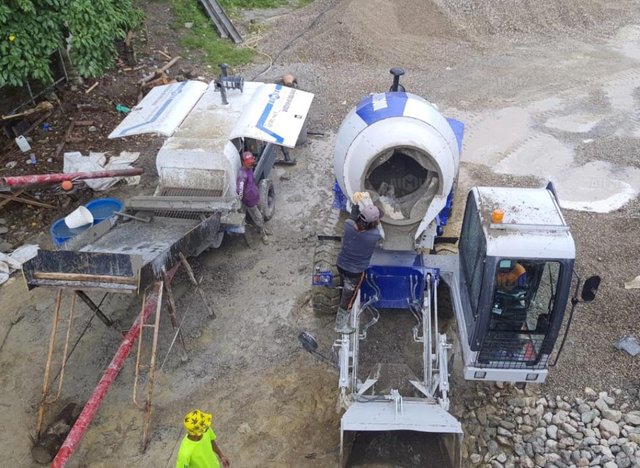Is There a Market for Self-Loading Concrete Mixers in Latin America?
The construction industry in Latin America has been experiencing significant growth, driven by rapid urbanization, infrastructure projects, and residential developments. As these projects become more complex and diverse, contractors and builders are turning to more efficient and versatile equipment to meet the demands of the market. One such piece of equipment that has been gaining traction in the region is the self-loading concrete mixer. But is there a viable market for this machine in Latin America? Let’s dive into the factors that could influence the adoption and growth of self-loading concrete mixers in the region.
The Growing Demand for Construction Machinery in Latin America
Latin America has seen steady growth in its construction sector, with major projects spanning from housing developments to road construction and large-scale industrial projects. Countries like Brazil, Mexico, and Argentina are among the leaders in construction activity, attracting both local and international investment. This expanding industry creates a strong demand for machinery that can deliver more productivity and efficiency on-site, and self-loading concrete mixers(auto hormigonera) fit that need perfectly.
These mixers are designed to provide on-site concrete batching, mixing, and transportation, all in one machine. They are particularly suited for small to medium-sized construction sites, where traditional methods involving separate batching plants, mixers, and trucks might be less efficient or even impossible due to space or logistics constraints.

Why Latin American Contractors Need Self-Loading Concrete Mixers
In regions where construction sites can be spread out over large, undeveloped areas, having the ability to mix concrete directly on-site can save time and reduce transportation costs. Moreover, Latin American markets, particularly those in rural or remote areas, often face challenges in terms of infrastructure and logistics. A self-loading concrete mixer offers an effective solution by eliminating the need for separate batching plants or costly concrete transportation.
Another factor driving interest in these machines is their versatility. Contractors can adjust the mix design to suit the project’s specific needs, whether for road construction, foundations, or even decorative concrete. This level of customization is appealing in markets where the demand for diverse concrete mixtures is high.
Key Benefits of Self-Loading Concrete Mixers for Latin America
1. Mobility and Flexibility
The mobility of a self-loading concrete mixer(auto hormigonera Bolivia) is one of its strongest selling points in Latin America. Many construction projects are located in remote areas where access to centralized batching plants is limited or non-existent. These machines can easily be driven to any construction site, regardless of terrain, offering an invaluable solution for on-site concrete production. The ability to transport materials, mix concrete, and deliver it directly to the site without delays or reliance on additional equipment makes these mixers particularly useful in Latin America.
2. Cost-Effective Solution
Given that many Latin American countries are still developing, cost efficiency is crucial for construction businesses. Self-loading concrete mixers provide a more cost-effective alternative to traditional methods by reducing the need for separate mixing, transportation, and labor. They also reduce material waste, as the operator can precisely control the mix proportions. This leads to both short-term savings and long-term returns on investment.
3. Ideal for Small to Medium-Sized Projects
In many parts of Latin America, the construction market is made up of smaller and medium-sized contractors who often work on less complex, but still significant, projects like local roads, residential buildings, and smaller commercial properties. The versatility of a self-loading concrete mixer allows contractors to take on a range of projects without investing in large, expensive equipment that may be underused. This is especially appealing in emerging markets where smaller businesses dominate the construction landscape.
4. Reduced Labor Costs
Labor shortages are an ongoing challenge in many Latin American countries, and the need to reduce labor costs is a major driving factor for automation in construction. Self-loading concrete mixers offer a way to streamline the mixing and transportation process with fewer workers, cutting down on labor costs and boosting efficiency.
Challenges to the Adoption of Self-Loading Concrete Mixers in Latin America
1. Initial Investment
While self-loading concrete mixers are cost-effective in the long run, their initial investment can be relatively high compared to traditional concrete mixers or manually operated batching systems. This could be a barrier to entry for smaller contractors, especially in markets where financing options may be limited.
2. Awareness and Education
Another challenge is the limited awareness of self-loading concrete mixers in some parts of Latin America. While larger contractors in Brazil or Mexico may be familiar with these machines, many smaller companies may still rely on traditional methods. Educating the market about the benefits, versatility, and cost savings of self-loading mixers will be key to driving their adoption across the region.
3. Infrastructure and Support
In regions with less developed infrastructure or where dealer networks are not yet widespread, getting timely support and spare parts for self-loading mixers may be a challenge. Manufacturers and distributors will need to ensure that their products are supported with adequate service and parts availability in Latin American markets.
Conclusion
There is significant potential for the growth of self-loading concrete mixers in Latin America. The benefits of mobility, flexibility, and cost-effectiveness align well with the needs of the region's growing construction sector. While challenges such as high initial investment, limited awareness, and infrastructure gaps exist, these can be overcome with strategic market education and stronger dealer networks. For contractors and businesses in Latin America looking for a way to improve on-site efficiency and reduce overall project costs, investing in a self-loading concrete mixer could be a smart move to stay competitive in an evolving market.